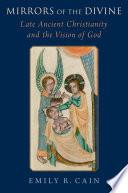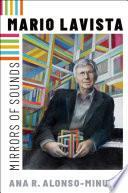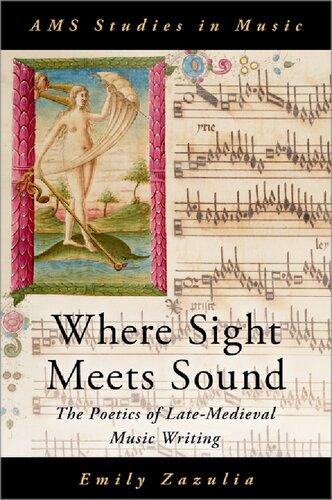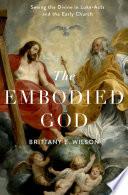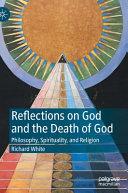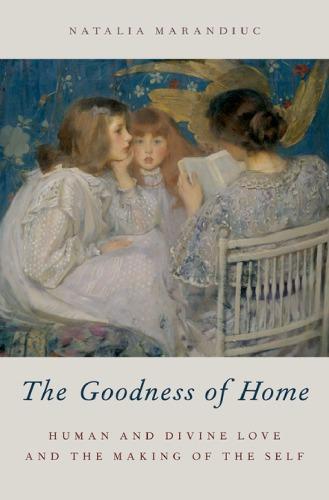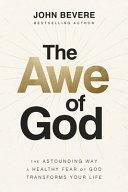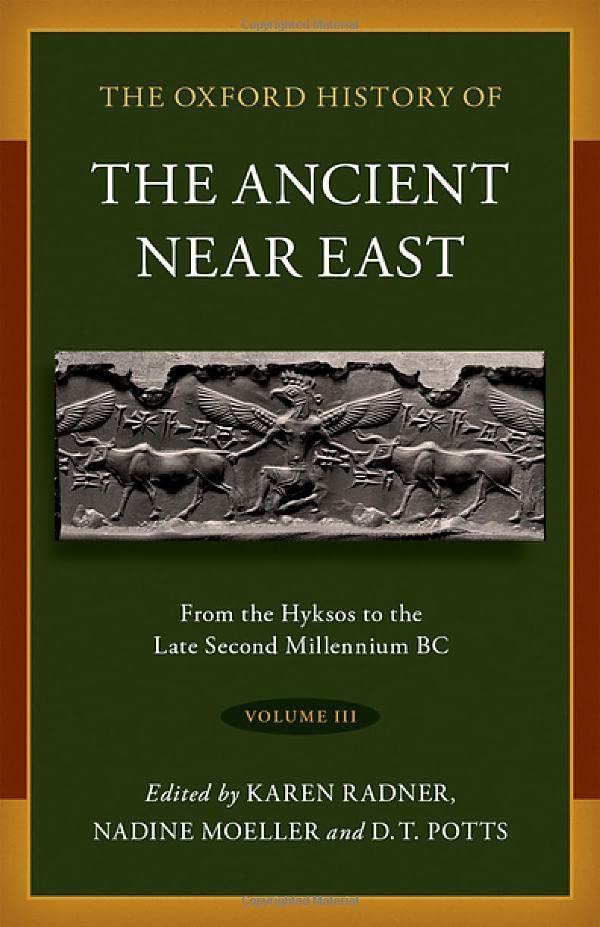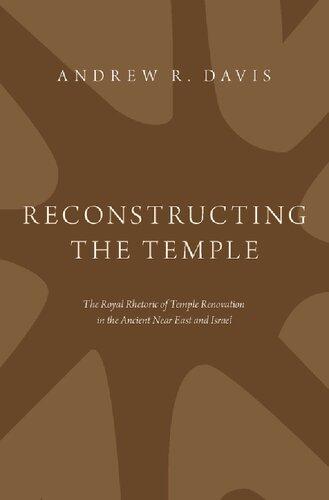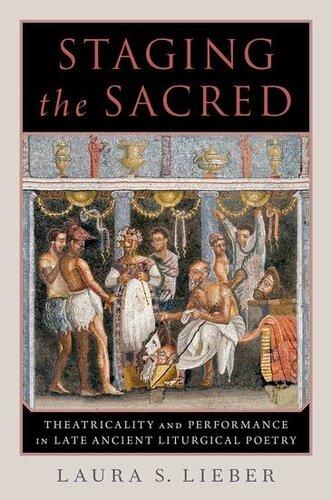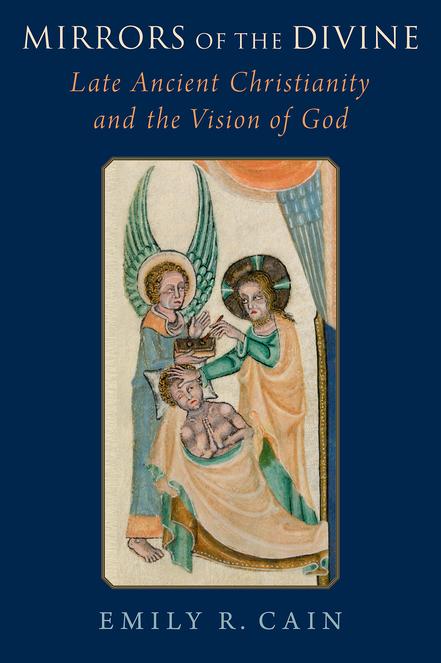Introduction
There has long been a curious fascination with eyes and mirrors, as evidenced throughout art, film, and literature. From fantastical characters who shoot lasers from their eyes to those whose memories are altered visually, the way in which a story portrays the function of the eyes demonstrates the way the storyteller imagines the character’s relationship to the world. Is the character powerful or powerless? Does she impact her world, or is she impacted by that world? The storyteller’s portrayal of vision answers those questions and reveals deeper assumptions about the individual and her ability to move within and to know her world. While eyes are associated with interacting with this world, mirrors are distinctly associated with interacting with some other world.1 Mirrors function as portals to other worlds—windows that glimpse an alternate reality or harmful traps that hide sinister intentions.2 How an author portrays eyes reveals how she understands the world, while how she portrays mirrors reveals how she imagines the unknown.
Eyes and mirrors function not only as symbols within stories, but they also serve as frequent metaphors in language. Modern English regularly pairs sight with knowledge, such as “I see what you mean” or “Do you see what I’m saying?” Mirror metaphors are associated with imitation, of course, but also with reflection or self-knowledge. These rhetorical links are so common today that they have become inert metaphors, mere remnants of a scientific belief long since gone.3 In the world of Late Antiquity, however, such visual metaphors were living, tied closely to a material understanding of the
1 For more on mirrors in Roman art, see Rabun M. Taylor, The Moral Mirror of Roman Art (New York: Cambridge University Press, 2008).
2 See, for instance, the “Mirror of Erised” that reveals a person’s deepest desire in J. K. Rowling, Harry Potter and the Sorcerer’s Stone (New York: Scholastic, 1998); Lewis Carroll’s Alice’s Adventures in Wonderland & Through the Looking-Glass; and classic fairy tales such as Snow White
3 Alive/living metaphors tend to surprise the reader by their unexpected pairing. Dead/inert metaphors have become so pervasive that they have lost the ability to surprise. For more, see Paul Ricoeur, The Rule of Metaphor: The Creation of Meaning in Language, trans. Robert Czerny (London: Routledge, 2008), 111. For a helpful description of inert Christian metaphors, see Janet Martin Soskice, The Kindness of God: Metaphor, Gender, and Religious Language (Oxford: Oxford University Press, 2007), 3.
Mirrors of the Divine. Emily R. Cain, Oxford University Press. © Oxford University Press 2023. DOI: 10.1093/oso/9780197663370.003.0001
world and a correspondingly tactile nature of sight.4 What might seem to be mere science fiction today has its roots in ancient science, with different assumptions about the science of sight and mirrors.
These differing assumptions impact vision far beyond the basic mechanics of sight. In his fragmented text On Love from near the end of the first century CE, Plutarch noted that if all people were to see the same things in the same ways, then everyone would fall in love with the same person. The diversity of loves, he argued, demonstrates that the eyes are not impartial; they can be trained by art or developed by nature.5 Plutarch’s comments illustrate a deeper point that we all know but often forget: each of us sees the world differently.6 Jaś Elsner locates this difference in what he calls conceptual frameworks, ways that we interpret what is seen to make it meaningful, and he notes that these frameworks can lead to “varying and even contradictory responses and meanings” when applied to the same image by different people or even by the same person, but at different times.7 Helen Morales notes that these conceptual frameworks are determined by one’s ethnicity, race, gender, education, sexuality, religion, and social location.8 And yet these subjective ways of seeing are not merely descriptive; they are also prescriptive. That is, they not only indicate one’s social role, but they also serve to produce and to define it.9 Not everyone sees the world in the same way—some see it partially
4 Roland Betancourt has argued against a haptic understanding of sight in antiquity, arguing that the metaphors of touch should be read not as relating to sight itself, but rather as metaphors for the mental and cognitive processes of perception. Roland Betancourt, Sight, Touch, and Imagination in Byzantium (Cambridge: Cambridge University Press, 2018), 5–6. For more on the material understanding of the ancient world, and what is commonly termed “The Material Turn,” see Patricia Cox Miller, The Corporeal Imagination: Signifying the Holy in Late Ancient Christianity (Philadelphia: University of Pennsylvania Press, 2009), 3ff; David Fredrick, The Roman Gaze: Vision, Power, and the Body (Baltimore: Johns Hopkins University Press, 2002); Susan Ashbrook Harvey, Scenting Salvation: Ancient Christianity and the Olfactory Imagination (Berkeley: University of California Press, 2006); and Jennifer Glancy, Corporal Knowledge: Early Christian Bodies (Oxford: Oxford University Press, 2010). For more on tactility and sight in early Christianity, see Shadi Bartsch, The Mirror of the Self: Sexuality, Self-Knowledge, and the Gaze in the Early Roman Empire (Chicago: University of Chicago Press, 2006), 58–67. For a similar exploration of the tactile nature of sight in the New Testament, see J. M. F. Heath, Paul’s Visual Piety: The Metamorphosis of the Beholder (Oxford: Oxford University Press, 2013).
5 On Love, Menander, frg. 568 = K-A 791.
6 Georgia Frank makes a similar point about ancient pilgrims, “that pilgrims did not necessarily see the way we see,” in Georgia Frank, The Memory of the Eyes: Pilgrims to Living Saints in Christian Late Antiquity (Berkeley: University of California Press, 2000), 103.
7 Jaś Elsner, Art and the Roman Viewer: The Transformation of Art from the Pagan World to Christianity (Cambridge: Cambridge University Press, 1997), 2–3.
8 Helen Morales, Vision and Narrative in Achilles Tatius’ Leucippe and Clitophon (Cambridge: Cambridge University Press, 2004), 21.
9 See also Morales, who is building on Teresa De Lauretis, Technologies of Gender: Essays on Theory, Film, and Fiction (Bloomington: Indiana University Press, 1987); Helen Morales, Vision and Narrative in Achilles Tatius’ Leucippe and Clitophon (Cambridge: Cambridge University Press, 2004), 23.
or not at all—and the presence or absence of sight becomes a productive place to think about what it means to be human: revealing assumptions about who you are, what you can know, and how you can act.
The world looks different when one sees differently, and when we take sight for granted in these ancient texts, we miss fundamental assumptions about the subjective experiences of humanity. How we understand perception shapes what and how we see and also our broader senses of self, and to miss how sight worked for these late ancient authors, therefore, is to look past some of the most self-conscious ways that late ancient Christians thought of themselves, their worlds, and their God. How do I know and interact with the world? What does it mean to see God? Can one see God in this life? If so, how and to what extent? And how is one impacted by sight?
This book asks precisely those questions, seeking to bring into focus how four influential late ancient authors—Tertullian of Carthage, Clement of Alexandria, Gregory of Nyssa, and Augustine of Hippo—employ language of vision and of mirrors in their discursive struggles to construct Christian agency, identity, and epistemology. These authors span from the second through fourth centuries CE in both Eastern and Western Christianity, and I analyze their theological writings on vision and knowledge of God to explore how they pieced together rival and contradictory theories of sight to shape their cosmologies, theologies, subjectivities, genders, and discursive worlds. The different theories of vision partly answered the question of how we see; but more, the differences around vision and mirrors offer a keyhole into questions of the relationships between heaven and earth, body and soul, men and women, and beyond.
Each early Christian author describes the vision of God through the Pauline verse “For now we see in a mirror, dimly, but then we will see face to face,” and each ties this metaphor of a flawed vision of God to an understanding of a distinctly flawed human body.10 Yet each author also interprets or applies this verse differently based on a diverse set of assumptions about how they understand seeing and mirrors to function: does vision occur by something leaving or entering the eye, is one impacted by seeing or by being seen, and do mirrors offer trustworthy knowledge? This book brings to light the significance of those different assumptions. How an author portrays eyes reveals how they envision one’s relationship to the world, while how they portray mirrors reveals how they imagine the unknown, and both have
dramatic impacts on how one interprets what it means to see God through a mirror, dimly.
Context and Framing
Many ancient thinkers were fascinated with sensory perception. Some senses needed only simple explanations, such as taste and touch that occur through direct contact. Other senses demanded greater thought, such as smell and hearing, both of which require proximity, leading to proposed theories of vapors drifting to the nose or noises drifting to the ears.11 Vision, however, posed the greatest challenge. Taste and touch require direct contact, while smell and sound require some amount of proximity, but vision can occur over vast distances, to the sun and stars, seemingly instantaneously, yet with no effort. If all other senses can be explained through a kind of touch, how then does vision function?
Theorists debated whether the eye contained its own fire,12 whether the eye emitted a ray or visual pneuma, 13 how far such a ray or pneuma extended,14 whether that ray or pneuma takes up space,15 whether the objects seen emitted particles to the eye,16 and whether a medium between eye and object, for example air, was required to see.17 Through it all, each author also described one’s role and ability in the visual process. Was the seer active or passive, impacting the world or being impacted by the world? In addressing these questions, vision became deeply tied to agency in describing one’s relationship to the world.18
11 I expand on ancient theories of perception in Chapter 1. For another excellent overview of ancient understanding of sensory perception, see Philip Thibodeau, “Ancient Optics: Theories and Problems of Vision,” in A Companion to Science, Technology, and Medicine in Ancient Greece and Rome, ed. Georgia L. Irby, vol. 1 (Oxford: John Wiley & Sons, 2016), 130–44. See also David C. Lindberg, Theories of Vision from Al-Kindi to Kepler (Chicago: University of Chicago Press, 1976).
12 Empedocles and Parmenides first suggested that the eye contained a fire, but Plato popularized this belief in Timeaus. See especially Ti. 45b–d.
13 Galen, De Symptomatum Causis 1.2 (v22 pp88–89k).
14 See Galen on Herophilus, De Symptomatum Causis 1.2 (v22 pp88–89k); Alexander of Aphrodisias, On the Soul
15 See Galen, De placitis 7 and Euclid, Optica 1–3.
16 This is usually classified as intromission, though Plato thought that both the objects and the eye emitted particles in Timeaus. See especially Ti. 45b–d See also Diogenes Laertius in Lives of Eminent Philosophers Life of Epicurus x.46; Lucretius in De Rerum Natura 4.30–40.
17 Theophrastus, De Sensu 50–55; Democritus (known through Theophrastus’ De Sensu).
18 See Chapter 1 for more on the ancient theories of vision.
Though the authors debated the role of agency in vision, each theorist agreed on linking vision to knowledge and defending the nature of that knowledge against the threats posed by optical illusions such as a straight oar appearing bent in water.19 Optical illusions became prime examples that illustrate the subjectivity of sight as visual objects that appear differently from different perspectives, and they also raised doubt about the reliability of visual knowledge. Visual theorists sought to show the rationality of vision despite such illusions: perhaps the particles were damaged by the air or water,20 maybe the rays grew weary across vast distances,21 or possibly some aspects of the object simply fell between multiple visual rays.22 While their explanations for these illusions differed, this discourse demonstrates that writing about vision was also deeply wrapped up in debates about epistemology. And these debates about epistemology, in turn, rest upon a fundamental assumption about the subjectivity of vision: if the world looked identical to all people at all times, there would be no need to defend the nature of visual knowledge.
While scientific discussions of visual perception became intertwined with debates about agency and epistemology of the world, mirrors garnered their own associations, as they were perceived to split the gaze between the self and other-worldly knowledge.23 Most ancient mirrors were simple polished metal discs that provided only dim or distorted reflections.24 Ancient mirrors, like optical illusions, showed the world as other than it is, becoming associated with a world of possibility: mirrors could be a means of selfreflection and self-improvement, or they could be a means of self-corruption and destruction; mirrors could offer glimpses into the other-world, or they could become lethal traps. The discussion that swirled around mirrors demonstrated that reflection was never merely neutral, but it was fraught with magical or mystical connotations, wrapped up in debates over morality and spirituality.25
19 Ancient Skeptics had employed such optical illusions to cast doubt upon the very nature of knowledge itself. See Sextus Empiricus, P. 100–117; Diogenes Laertius, Vit. Ph. 9.87; Aristotle, Pr. 15.6.911b.19–21; Plutarch, Adversus Colotem 1121a–b.
20 Lucr., Rer. nat. 4.353–363.
21 Stoicorum Veterum Fragmenta (hereafter SVF), ed. Hans Friedrich August von Arnim, 4 vols. (Stuttgart: Stutgardiae in aedibus B.G. Tuebneri, 1903), 863.
22 Euclid, Optica 9.
23 Morris R. Cohen and I. E. Drabkin, A Source Book in Greek Science, 1st ed. (Cambridge, MA: Harvard University Press, 1948), 263–64.
24 Willard McCarty, “The Shape of the Mirror: Metaphorical Catoptrics in Classical Literature,” Arethusa 22, no. 2 (1989): 161–95, 167.
25 See Chapter 4 for more on mirrors.
This discourse gained theological significance through the scriptures, which link vision and mirrors to spiritual health, visual piety, and transformative knowledge of God 26 Discussions of visual perception were prime locations for philosophical speculation about epistemology and cosmology as well as theological speculation about mystical theology and theological anthropology. Late ancient authors sought to define the nature of humanity, its similarity to and difference from the world and the divine, its ability to act or to be acted on, and its ability to know the world and the divine.
In this book, I focus on a selection of theological discussions on vision and mirrors, and I argue that these philosophical and theological speculations of vision of God are also the very location for important discursive struggles over claims of Christian identity, Christian agency, and Christian epistemology. This frame of identity, agency, and epistemology describes precisely what each author argues through their depictions of vision, but I also analyze how each author does this through a second linguistic frame of discourse, rhetoric, and metaphor, which helps to examine how language shapes and is shaped by its environment. While we cannot access the world behind the texts, this linguistic frame reveals aspects of the way that these texts participate in constructing and revealing new meaning, particularly when comparing the texts with one another, as I do in Chapter 7.
The term discourse has been applied in many ways, but I find it particularly useful to think along the lines of Michel Foucault’s description of discourse as linguistic practices that shape what they describe.27 By participating in a discourse about Christian identity, for example, a text does not merely describe the nature of that identity, but it also serves to produce that identity by constructing a particular vision of the world and then seeking to convince its reader of the power of that vision.28 Epistemological debates not only define knowledge, but they also define who has access to that knowledge and to what extent. Historically, such discursive struggles were wrapped up in debates over power and authority, defining Christian identity as distinct from the world or limiting spiritual epistemology to a specific community. Thus, these threads of Christian agency, identity, and epistemology were deeply intertwined with one another, tying together debates about epistemology to
26 Matthew 6:22, Romans 1:20, 1 Corinthians 13:12, and 2 Corinthians 3:18.
27 See especially Michel Foucault, Archaeology of Knowledge and the Discourse on Language, trans. A. M. Sheridan Smith (New York: Pantheon, 1972), 49.
28 Laura Nasrallah’s model has been particularly helpful to me in thinking about the way that discourse functions. See especially Laura Nasrallah, An Ecstasy of Folly: Prophecy and Authority in Early Christianity (Cambridge, MA: Harvard Divinity School, 2004), 5.
distinct identities or abilities. These texts do not offer clear views into historical realities; rather, they offer a glance into the rhetorically constructed worlds of their authors, and these rhetorical worlds assert their definitions of Christian identity against other communities or offer their unique claims on knowledge.
Tied to this definition of discourse is an understanding of rhetoric as a key to social power but a social power that is a dynamic two-way process between both a text and its reception.29 Not only does discourse help to shape its society, forming a community and ascribing authority, but such discourse is also profoundly shaped in return. Christian rhetoric is deeply embedded in its environment; and, as that environment shifts, whether geographically or chronologically, so also does the nature of that rhetoric. I am not seeking to reiterate here the excellent work that others have done in describing the role of discourse in the rise of Christianity.30 Rather, I explore the ways that late ancient Christian authors engaged in discourses of vision and mirrors to evoke particular understandings of the spiritual journey and community for their readers. Such rhetoric shifted over time and across geographies, and what begins as rhetoric of literal vision gradually gives way to metaphorical vision.
Metaphor theory has shifted over the years from treating metaphor as a simple substitution of meaning from A to B to a more complicated comparison of similarities between two things.31 George Lakoff, however, redefined the field of metaphor theory in the late 1980s with his argument
29 See especially Averil Cameron, Christianity and the Rhetoric of Empire: The Development of Christian Discourse (Berkeley: University of California Press, 1991), 4.
30 There are a number of excellent studies that trace the relation between discourse and the rise of Christianity. See especially Averil Cameron, Christianity and the Rhetoric of Empire: The Development of Christian Discourse (Berkeley: University of California Press, 1991) and Judith Perkins, The Suffering Self: Pain and Narrative Representation in the Early Christian Era (New York: Routledge, 1995).
31 Metaphor as substitution is typically seen as the classical view, but most contemporary theorists reject this interpretation of metaphor. Some attribute metaphor as substitution to Aristotle in Poetics 1458a, but Janet Martin Soskice argues that it is not from Aristotle, but from Locke. See Janet Martin Soskice, Metaphor and Religious Language (Oxford: Clarendon Press, 1987), 1–14. For attribution to Aristotle, see Max Black, “More about Metaphor,” in Metaphor and Thought, ed. Andrew Ortony, 2nd ed. (Cambridge: Cambridge University Press, 1993), 22. For scholarship on metaphor as a comparison of secondary meanings, see John Seale, “Metaphor,” in Expression and Meaning: Studies in the Theory of Speech Acts (Cambridge: Cambridge University Press, 1985), 76–116; Murray Knowles and Rosamund Moon, Introducing Metaphor (New York: Routledge, 2006), 66. See also Jonathan Z. Smith, Drudgery Divine: On the Comparison of Early Christianities and the Religions of Late Antiquity (Chicago: University of Chicago Press, 1994), particularly pages 52–53 for a discussion of the role of comparison (especially exaggeration and difference) in how things might be conceived and described in Late Antiquity. For an anti-comparison view, see Donald Davidson, “What Metaphors Mean,” Critical Inquiry 5, no. 1 (1978): 31–47; Max Black, Models and Metaphors: Studies in Language and Philosophy, 1st ed. (Ithaca, NY: Cornell University Press, 1962), 37.
that metaphor is not only a matter of words but also of concepts.32 He used the common metaphor love is a journey to demonstrate how a larger concept groups together a number of smaller metaphors: we’re stuck, we’re at a crossroads, we’ve hit a speed bump, and so on.33 He argued that these are not separate linguistic metaphors, but rather all stem from the larger cognitive source domain of journey and apply to the target domain of love in which the lovers are the travelers, love is the vehicle, and the mutual goals are the destination. Analyzing an ancient metaphor, then, must begin with the potential strands that make up their cognitive maps in order to understand how the metaphor functions.
One critique of Lakoff’s theory is that he does not distinguish between different types of metaphors, particularly between active/alive metaphors and inert/dead metaphors. Dead or inert metaphors are metaphors so pervasive that people have become unaware of them, and Janet Martin Soskice describes such inert Christian metaphors “worn smooth, like an old marble staircase . . . until their original figurative potency was lost.”34 Paul Ricoeur explains that one’s use of living metaphors surprises the hearer (or reader) by combining “non-sensical” elements in an unexpected context.35 In Lakoff’s theory, one’s metaphorical statement simply transfers meaning from one domain to another, but in Ricoeur’s theory, a living metaphorical statement creates new meaning. It is precisely this new meaning that I explore in this project by examining the metaphorical ways that late ancient authors combine disparate theories of vision to describe their complicated views of humanity and of God. It is precisely through paradoxical constructions of visual theories that these authors construct new theological meaning and reimagine what it means to see differently.
One type of metaphor that Lakoff highlights is the ontological metaphor: these are metaphors that draw from physical entities or substances and enable a person to conceive of and to describe abstract things such as events, emotions, ideas, and so on in terms of such physical entities or substances.36 Lakoff suggests that the main source domain typically comes from our own
32 George Lakoff and Mark Johnson, Metaphors We Live By, 2nd ed. (Chicago: University of Chicago Press, 2003), 244.
33 George Lakoff, “The Contemporary Theory of Metaphor,” in Metaphor and Thought, ed. Andrew Ortony, 2nd ed. (Cambridge: Cambridge University Press, 1993), 206–11.
34 Janet Martin Soskice, The Kindness of God: Metaphor, Gender, and Religious Language (Oxford: Oxford University Press, 2007), 3.
35 Paul Ricoeur, The Rule of Metaphor: The Creation of Meaning in Language, trans. Robert Czerny (London: Routledge, 2008), 111.
36 Lakoff and Johnson, Metaphors We Live By, 25.
experiences, particularly that of our own bodies, to describe the abstract.37 Yet late ancient authors did not necessarily conceive of their bodies and experiences in the same way that we do today; or, for that matter, even with one another. Because of this disparity, metaphors may have opened conceptual possibilities for late ancient authors that are drastically different than the possibilities available to us today, and my purpose in this project is to explore how the optical metaphor that links sight to the divine functioned in the context of Late Antiquity in order to gain a new understanding of early Christian epistemologies and theological anthropologies. It is through their writings on vision that we can glimpse an author’s portrayal of their embodied relationship to their worlds, and it is through their writings on mirrors that we can begin to tease out their construction of new meaning as applied to the divine.
Throughout the chapters that follow, I move back and forth between the what and the how, examining what each author portrays in terms of identity, agency, and epistemology, and I do so by examining how each author engages discourse, rhetoric, and metaphor. Vision itself is a vast topic, crossing multiple disciplinary boundaries. In antiquity, the exploration of vision spanned across the subfields of philosophy, geometry, medicine, and as I argue here, theology; while today, vision spans the disciplinary boundaries from physics to psychology and biology, but also history, classics, philosophy, art history, and theology, among others. A topic as vast as vision, in other words, requires a prismatic approach.
My own approach brings three facets of that prism together, examining writings on philosophical, medical, and theological rhetoric about vision. By focusing on these writings, I uncover some of the most self-conscious ways that late ancient authors thought of themselves, their worlds, and their God, offering a key insight into their theological visions of the late ancient world. Analyzing rhetoric on vision and mirrors uncovers both individual assumptions and broader cultural patterns and shifts. This offers us a way forward in conversations about mysticism, so often separated from conversations about the body, as evidenced by some contemporary discussions of the spiritual senses as divorced from bodily senses. Vision, however, functions as the very juncture between questions of esoteric epistemology and mystical theology and deeply grounded embodiment. Vision is the point of contact between the body and the world; yet, through cognition,
37 Lakoff and Johnson, Metaphors We Live By, 25.
it is also the avenue for rich imaginings of the divine. As such, this examination of rhetoric serves to ground late ancient authors’ understanding of the vision of God in a deeply embodied and subjective understanding of the world.
These writings about vision were grounded in philosophical, mathematical, medical, and scriptural traditions about vision, but they were also connected to contemporary visual practices. It is my claim that it is this intersection between the historical traditions and their contemporary practices that reveals not just the embodied nature of late ancient Christianities but also how they embodied their Christianities. In other words, it is not simply that the body matters in their theologies, but rather the kind of body they emphasize; and, in each case, it is a distinctly flawed body that is elevated. Sometimes those flaws are envisioned as something to be overcome, as in Clement’s and in Augustine’s texts; but, other times, those flaws are reimagined as the very basis for one’s connection to God, as in Tertullian’s and in Gregory of Nyssa’s writings. This study, then, offers a window into conversations about embodied mystical theologies but also into discussions of health and disability. Examining this rhetoric on vision and mirrors shows us how these early Christian authors embodied both their theological anthropologies and their mystical theologies in bodies that are envisioned as porous, diseased, mutable, or blind. This rhetoric illustrates flawed bodies reimagined as prime locations for one’s connection to God.
More broadly, this book is also for scholars of the late ancient world, as it demonstrates the connections among philosophical, theological, and medical ideas. Theological anthropologies are deeply tied to cosmologies, while mystical theologies are tied to epistemologies. As I will show, the paradoxes and contradictions found within the authors’ writings demonstrate not a lack of knowledge of philosophical and medical traditions, but rather a deep and enduring engagement with those very traditions in ways that attempt to push back, develop, or enact those philosophies, medical understandings, and theologies. In other words, the philosophies and medical theories may help us to better understand the theologies, but the reverse is also true, and we only discover the connections when such disciplinary lines are crossed.
As I have argued, a topic as large as vision requires a prismatic approach, as I undertake in this book. I have chosen to focus on some of the textual facets of that prism, which refract the rich intricacies of these theoretical and rhetorical worlds with all their contradictions and complexities, and I focus on the subjective nature of vision. Of course, other facets on vision are
needed as well, those that examine art history, material culture, and novels, and studies on vision’s relationship to affect, memory, sexuality, psychology, cultural critiques, mystic viewing, and more.38 When taken together, these varied approaches and projects reveal the rich variety of the broader prism of vision. It is my hope that this book will be read alongside these others, offering a conversation partner that reveals the subjective ways that late ancient authors thought of themselves, their worlds, and their God, tying together rhetoric of science and theology.
Thesis and Outline
In this book, I dive into the ancient Mediterranean world, with its proliferating discussions on vision and knowledge. I primarily examine the rhetoric of four late ancient authors: Tertullian of Carthage, Clement of Alexandria, Gregory of Nyssa, and Augustine of Hippo. I have selected these authors partly for their prominence, both in written records and in tradition, but also for their breadth across geographies and time. These authors span geographically and chronologically across Eastern and Western Christianity
38 Jaś Elsner explores what he calls the realist and the symbolic to show the link between vision and subjectivity in Art and the Roman Viewer: The Transformation of Art from the Pagan World to Christianity (Cambridge: Cambridge University Press, 1997). Roland Betancourt has reexamined ancient vision to argue that sight is not touch in Sight, Touch, and Imagination in Byzantium (Cambridge: Cambridge University Press, 2018). Maia Kotrosits focuses on the role of affect in vision in Maia Kotrosits, Rethinking Early Christian Identity: Affect, Violence, and Belonging (Minneapolis: Fortress Press, 2015), and she draws together the linguistic and the material in Maia Kotrosits, The Lives of Objects: Material Culture, Experience, and the Real in the History of Early Christianity, 1st ed. (Chicago: University of Chicago Press, 2020). Robin Jensen focuses on the power of images, and particularly portraits, in early Christian teaching in Robin M. Jensen, Face to Face: Portraits of the Divine in Early Christianity (Minneapolis: Augsburg Fortress, 2004). Georgia Frank identifies the role of vision and memory in pilgrimage in The Memory of the Eyes: Pilgrims to Living Saints in Christian Late Antiquity (Berkeley: University of California Press, 2000). J. M. F. Heath tears down the false dichotomy of material versus spiritual senses, showing instead the complex frameworks from which early Christians might draw in Paul’s Visual Piety: The Metamorphosis of the Beholder (Oxford: Oxford University Press, 2013). Shadi Bartsch turns to the mirror, with an emphasis on vision and mirrors in constructions of the self in antiquity in Shadi Bartsch, The Mirror of the Self: Sexuality, Self-Knowledge, and the Gaze in the Early Roman Empire (Chicago: University of Chicago Press, 2006). David Fredrick’s edited volume contains a collection of essays that show the diverse forms of visuality and sexuality in Rome in The Roman Gaze: Vision, Power, and the Body (Baltimore: Johns Hopkins University Press, 2002). Rachel Neis offers a study on viewing problematic visuals in Jewish culture in Rachel Neis, Sense of Sight in Rabbinic Culture: Jewish Ways of Seeing in Late Antiquity (West Nyack, NY: Cambridge University Press, 2013); Rachel Neis, “Eyeing Idols: Rabbinic Viewing Practices in Late Antiquity,” Jewish Quarterly Review 102, no. 4 (Fall 2012): 533–60. David Morgan has highlighted the ways in which images impact the viewer in David Morgan, Images at Work: The Material Culture of Enchantment (New York: Oxford University Press, 2018).
and from the second through the fourth centuries CE, and they have each been key resources in the development of theological speculation about knowledge of God. All four wrestle with some aspect of theology through the discourse of vision and of mirrors, and I approach these texts with a particular interest in their uses of rhetoric to construct Christian agency, Christian identity, and Christian epistemology. While I approach each author with the same questions, I have varied my scope in relation to each author, focusing on a few key texts for Gregory and Augustine, while engaging a broader corpus for Tertullian and Clement. Some of this is logistical, as Gregory and Augustine have much larger bodies of work than do Tertullian and Clement, but some of it is also intentional. Gregory and Augustine each have sustained discussions on vision and mirrors in particular texts, warranting extended analysis, while Tertullian and Clement intersperse references across their various texts. As such, I have followed suit, piecing together the writings in Tertullian and Clement while diving more deeply into a few key places in Gregory and Augustine. Through it all, I argue that the writing of the late ancient Christian authors functions not descriptively, but prescriptively to construct an author’s theological vision of the world in an attempt to persuade the readers of its power. Each author offers a distinctly Christian training of the eyes, a prescription for looking that reveals deeper assumptions about their cosmologies, genders, and statuses both in relation to the world and in relation to God.
It is precisely because mirrors seem so common today that it is easy to forget that this was not always the case. Asking fundamental questions about how people with a different set of assumptions understood vision and mirrors to function can lead to surprising insights about their applications. As I have already noted, in the ancient Mediterranean societies, speculation about vision and mirrors cut across a variety of disciplinary fields, and these diverse discussions of vision and mirrors were locations for conjecture on topics ranging from the connection between the human and the world to the connection between the human and the divine. Arguments about the phenomenon of visual perception are situated in contexts of broader debates about agency and epistemology, while discussions of mirrors focus on the morality or immorality of reflection, linking to broader debates about identity. Such visions of the world serve to manufacture boundaries to knowledge, through discussions of gender and baptismal status, or to encourage or discourage the possibility of that knowledge through discussions of human
agency. They define what can be known and what must remain unknown, and they identify particular fields and sources of knowledge as legitimate.
Ancient writing on vision and mirrors ties together philosophical goals with theological ones, as discussions of cosmology and the makeup of the world lead to discussions of theological anthropology and the theological understanding of the human within that world. Discussions of epistemology and the nature of knowledge give way to discourses on mystical theology and the nature of the knowledge of God in this life. Scientific theories shape theologies, and vice versa, and questions about agency, whether I am in control or controlled by vision, lead to questions of epistemology, whether and what I can know, which lead to larger questions of identity, who I think I am. Authors differ in their foci, yet underneath these different emphases is a greater similarity: their writing on vision and mirrors grounds their theologies in subjective understandings of the human in flawed bodies as the prime location of the spiritual encounter.
I argue that we must explore the scientific underpinnings of each author’s writing on physical vision in order to understand the subjective and embodied nature of their writing on the vision of God. I show that seemingly subtle differences in ancient scientific theories of vision and mirrors lead to dramatically different theological outcomes about theological anthropology, mystical theology, and epistemology. I argue that these philosophical and theological speculations of vision of God are also the very locations for important discursive struggles over claims of Christian identity, Christian authority, and Christian epistemology.
The book is structured broadly chronologically, interspersed with two contextual chapters to offer further background on vision and mirrors. My final chapter takes a step back to place the authors in conversation with one another, teasing out the discursive threads to draw to the fore the ways in which these texts shifted over time and across geographies as they both shape and are shaped by their respective locations. I have written this book in such a way that chapters can largely stand alone or in conversation with one another, so that readers may dip in and out, focusing on relevant figures and sections. Each author offers a different prescription for Christian vision, but it is only when all the chapters are read together that we discover what difference those differences make. Each author grounds the spiritual vision in deeply flawed human bodies, and the cumulative effect of this rhetoric reveals the impact of the subjective nature of vision and its relation to agency,
epistemology, and identity: how and whether I can see ties to what I think I can know, which ultimately reveals who I think I am.
In Chapter 1, I trace the historical background of vision through early philosophical, medical, mathematical, and scriptural texts, showing that ancient writing about vision is tied to early epistemological debates about the nature of knowledge and agency, and the earliest roots of the scriptural tradition tie vision to spiritual identity, offering a link between vision and one’s relationship to the divine.
In Chapter 2, I turn to Tertullian of Carthage, demonstrating that Tertullian uses the Stoic and Epicurean theories of vision to construct a hierarchy in terms of bodily intactness and penetrability: God sees with Stoic rays and remains intact against harmful sights, while humans see by means of Epicurean intromission and are penetrated and transformed by harmful sights. I argue that Tertullian proposes a prescription for Christian vision that is grounded in embodied difference along his understanding of gendered bodies.
In Chapter 3, I move my analysis to the East to analyze Clement of Alexandria’s metaphor that baptism is like cataract surgery (Paedagogus 1.6.28) that enables the recipient to see God, and I argue that Clement uses visual perception to describe the transformation and new identity of the baptized Christian. Like Tertullian, Clement uses visual perception to define Christian identity as different from the world, but he ties that identity to an exclusive form of spiritual epistemology only available to the baptized.
In Chapter 4, I take another step back to trace the development of the mirror as metaphor, through philosophical, medical, mathematical, and scriptural texts to demonstrate that mirrors and reflection are fraught with meaning, tied to debates about morality and focus. I trace the twin paths of positive and negative associations through science, through literature, through scripture, and finally through Plotinus to show the development of this metaphorical mirror as it becomes the basis for the contemplative vision of God.
In Chapter 5, I analyze Gregory’s writing on the vision of God, and I argue that he uses visual perception to describe a synergistic relationship between the human and the divine in which both are active participants. In doing so, Gregory departs from Greek tradition to portray the mirror not only as an ontological divide between God and humanity, but also as the very pathway for one’s perpetual progress toward the vision of God.
In Chapter 6, I return to the West with Augustine of Hippo to analyze the collection of optical metaphors in his de Trinitate, revealing the way in which he uses visual perception to support his paradoxical relationship between human free will and divine grace. I demonstrate that Augustine combines the seemingly contradictory Platonic and Stoic theories of visual perception to emphasize the paradox of the human: one who is active yet acted upon by vision, one who can see the world reliably yet is unable to have a clear vision of God, and one who has free will yet stands in need of divine grace.
In the final chapter, Chapter 7, I take another step back to trace the patterns that have emerged from my study to reveal both the shared and the diverging assumptions about one’s relationship to the world and to God through vision’s link to the intersecting threads of agency, identity, and epistemology. I show that each author enters this discourse from a unique context and with a particular set of assumptions to describe the human in relation to the world and to the divine, but each engages the shared project of a discursive struggle over claims of Christian identity, authority, and epistemology through philosophical and theological speculations of vision of God.
In the Conclusion, I return to the significance of visual perception today and in antiquity, and to metaphor theory and vision’s link to discursive struggles over claims of Christian identity, Christian authority, and Christian epistemology. I reiterate the importance of visual perception in grounding late ancient authors’ understanding of the vision of God in an embodied understanding of the world.
In the pages that follow, we shall dive into the world of antiquity, where discourse on vision and mirrors functions to set epistemological boundaries, construct identity, and assert authority in subjective and embodied ways.
1
“Now We See”
Scientific and Scriptural Sight
Ever since the creation of the world his eternal power and divine nature, invisible though they are, have been understood and seen through the things he has made.1
Introduction
Late ancient Christian authors drew from a variety of sources in their writings on visual perception, merging their understandings of the scientific and scriptural traditions in their discourses about Christian agency, identity, and epistemology. In doing so, these late ancient authors incorporated texts that had participated in their own debates centuries before, and they often engaged with those same debates in their projects on vision. In this chapter, I explore those previous discussions of vision to show that writing on vision has long been involved with discursive struggles about agency, identity, and epistemology, even before these late ancient authors were writing, and that each of these threads is grounded in vision’s subjectivity. It is precisely because we all see the world differently that vision became a locus for epistemological debate, and it is also this subjective nature of vision that, in turn, becomes a way to describe the subjective experience of the divine.
I have identified three primary resources that serve as background for the late ancient authors. The first is the body of writing on the ancient science of sight, including philosophical, medical, and mathematical treatises. These works focus on how sight functions in the broader world or in the individual as well as the knowledge offered by that sight. They tie together vision with epistemology and agency, and the late ancient authors drew from these
1 Romans 1:20, NRSV.
Mirrors of the Divine. Emily R. Cain, Oxford University Press. © Oxford University Press 2023. DOI: 10.1093/oso/9780197663370.003.0002
theories to describe the function and impact of sight. The second resource is the Hebrew Bible, which takes the epistemological connection of vision and ties it together with one’s spiritual identity through divinely aided or unaided eyes. This offers a basis for using bodily eyes to describe one’s subjective relationship to the divine. The third resource is the New Testament, which furthers the connection between bodily eyes and spiritual health, but it also provides a foundation for visual piety. This offers the later authors a foundation to offer their own unique interpretations for how to engage the world through the eyes: a Christian prescription for looking. Taken together, these resources tie together visual knowledge with spiritual knowledge, and spiritual identity with visual piety, all founded on the subjective nature of vision.
In the first section, I engage the scientific writings on visual perception to show that vision is intimately tied to questions of knowledge and of agency. Philosophical, medical, and mathematical authors approach this topic from different perspectives and with different emphases, but they all agree that a defense of vision is a defense of epistemology. In defending that knowledge, they also point to vision’s subjectivity: after all, if we all saw the same things in the same ways, there would be no need to debate the nature of visual knowledge.
In the second section, I turn to the Hebrew Bible, which demonstrates an early link between vision and one’s relationship to the divine. Here, vision is something that impacts the viewer in deep and significant ways, and yet it does not impact all viewers in the same ways. Some eyes are aided by God, receiving life-saving sights, while other eyes are unaided by God, remaining blind to certain aspects of the world. Vision’s subjectivity, then, becomes intimately tied to one’s relationship to God, and whether and how one sees indicates aspects of one’s spiritual identity.
In my third section, I examine two New Testament examples that solidify the link between vision and one’s spiritual health and spiritual epistemology from the Hebrew Bible, but they also combine to point toward a new visual praxis. The first is a logion in Matthew that inscribes spiritual health onto bodily eyes, and the second is a passage from Romans that moves from the visible world to the invisible God and back again. It is this impetus of looking for the invisible through the visible that becomes the foundation for prescribing how to look at the visible world, offering a foundation for a Christian prescription for looking.
The scientific writings link vision to knowledge and agency, while the Hebrew Bible links vision to spiritual identity and transformation. The New
Testament texts merge both traditions to reflect a visual praxis in the visible world. I show that vision was intimately intertwined with debates about agency, identity, and epistemology long before the writings of the late ancient Christian authors, and that the late ancient authors engaged various aspects of each of these earlier debates in their own later depictions of vision of the world and vision of God. Underlying each of these aspects is the subjective nature of vision as well as vision’s unique connection between the body and the world, but also between the body and the divine. The eyes, at once, are individual and communal, bodily and spiritual, active and passive. In short, the eyes’ subjectivity is what allows the perspective to shift from self to God and back to the world.
Philosophers of Perception
Many ancient thinkers were fascinated with sensory perception, and they began their inquiries into sensation by proposing a connection between each sensory organ and its corresponding object of sensation. Some senses needed only simple explanations, such as taste and touch that occur through direct contact. Other senses demanded greater thought, such as smell and hearing, both of which require some amount of proximity to the source, leading to proposed theories of vapors drifting to the nose or sounds drifting to the ears.2 Vision, however, posed the greatest challenge, and therefore garnered the greatest attention. Unlike taste and touch, which require direct contact, or smell and hearing, which require some amount of proximity, vision occurs seemingly instantaneously and over vast distances, even to the sun and stars. While the other senses could be explained in terms of proximity and touch, vision could not. A further visual oddity is its lack of observable agency. Taste and touch typically require an act by the perceiver, bringing something to the tongue or pressing an object with a finger. Hearing and smell require sensory objects to act, releasing a noise or an odor. Yet sight eludes such straightforward category of agency. If all other senses can be explained through a kind
2 For an excellent overview of ancient understanding of sensory perception, see David C. Lindberg, Theories of Vision from Al-Kindi to Kepler (Chicago: University of Chicago Press, 1976), and Philip Thibodeau, “Ancient Optics: Theories and Problems of Vision,” in A Companion to Science, Technology, and Medicine in Ancient Greece and Rome, ed. Georgia L. Irby, vol. 1, 2 vols. (Oxford: John Wiley & Sons, 2016), 130–44.
of touch, with primary agency attributed either to the object or to the perceiver, how then does vision function?
Today, scientists divide their foray into visual perception into two separate but related fields: physics and the intersection of psychology and biology.3 Optics, a subfield of physics, encompasses everything that occurs outside the eye, while neuroscience and cognitive psychology move inward to explore nerve signals, brain processing, and perception. The ancients lacked such modern distinctions in their studies into sight, but they had their own subfields and specialties, namely natural philosophy, geometry, and medicine. Natural philosophers focused on situating visual perception within a broader framework of how they understood the world to function and the individual’s location within that framework. They argued over agency and impact: does vision occur by something leaving or entering the eye, and is one impacted by seeing or by being seen? Geometers, on the other hand, used geometrical reasoning to describe the lines and angles of light, reflection, and refraction but typically left out a broader attention to physical theory.4 They were less concerned with the impact on the viewer and more concerned with the rationality of the way in which one sees, and they focused on explanations of various optical illusions and mirrored reflections. Medical writers focused less on external sight and more on the internal human anatomy and the eyes’ connection to the brain or to the heart. Each subfield, with sometimes overlapping interests, approached sight with its respective emphases and perspectives, often leading to conflict and debate, but they all agreed on vision’s link to knowledge and defending the nature of that knowledge, whether philosophically, mathematically, or medically. It is precisely because things look different from different perspectives that there is an epistemological debate, so these very debates about the reliability of visual knowledge reveal the foundational nature of the subjectivity of vision.
The late ancient Christian authors of this project had varying degrees of familiarity with each subfield on visual perception, and the classifications tended to break down as later authors merged one theory with another in their quests for a cohesive whole. My goal here is to show that the debates about visual perception were deeply intertwined with broader debates about philosophy and epistemology, even before being merged with religious
3 Thibodeau, “Ancient Optics: Theories and Problems of Vision,” 130–31.
4 Thibodeau, “Ancient Optics: Theories and Problems of Vision,” 131.
debates about mystical theology and theological anthropology, and that all of these debates are tied to vision’s subjectivity.
I offer here the key debates common in ancient Mediterranean optical theory with an eye toward their connection to later debates about Christian identity, epistemology, and agency. I have chosen the authors below partly for breadth, showing the range of perspectives regarding visual perception, and partly for prominence in written records. These sources offer a picture of the kinds of questions that shaped society as each author wrestled with their subjective relationship to the world, and such sources also offer a backdrop against which to compare the similar endeavors found in early Christian writings to describe and to prescribe the self in relation to the divine through similar visual metaphors.
Visual Rays and Extramission
One group of visual theories begins with the premise that vision occurs when something leaves the eye and reaches out toward the object of sight. This is sometimes referred to as a visual ray theory or extramission,5 and many proponents of the visual ray theory maintain a theory of intromission for other senses. One such figure is Heracleides, who describes why we see lightning before hearing its thunder through this very distinction: our vision is sent out to meet the light, while our hearing waits for the sound.6
The earliest roots of the visual ray theory have been linked to the worshippers of the sun god Ra around 1500 BCE.7 These worshipers apparently believed that light was literally Ra’s sight, such that things exist only because Ra sees them. Slowly, this idea seems to have shifted from gods emitting visual light to humans emitting visual rays by the fifth century BCE and the Pythagorean school of thought.8 Whatever its origins, the visual ray
5 Though our knowledge of the atomists comes largely filtered through Theophrastus and Aristotle, our knowledge of the theories of extramission is, in some ways, even more removed, coming largely from modern reconstructions. Though the culmination of this view can be found in Ptolemy’s Optics, that text is preserved only from a Latin translation of an Arabic translation of the original, with the first book completely lost. See David E. Hahm, “Early Hellenistic Theories of Vision and the Perception of Color,” in Studies in Perception: Interrelations in the History of Philosophy and Science, ed. Peter K. Machamer and Robert G. Turnbull (Columbus: Ohio State University Press, 1978), 60.
6 Democritus A 126 a = 489 Luria; on Heracleides; Walter Burkert, Lore and Science in Ancient Pythagoreanism (Cambridge, MA: Harvard University Press, 1972), 380f.
7 Simon Ings, A Natural History of Seeing: The Art and Science of Vision (New York: W. W. Norton & Company, 2008), 158.
8 Lindberg, Theories of Vision from Al-Kindi to Kepler, 3.
theory is fully developed by the time of its most famous proponent: Plato (c. 427–347 BCE).
Plato’s theory is often misunderstood, even from as early as Theophrastus in the third century BCE who wrote that Plato conceived of vision occurring through two emanations: one from the eye and the other from the object.9 In fact, Plato’s theory also requires a third emanation: fire from the sun, which coalesces with the fire from the eye to form a “single homogeneous body.”10 This homogenized ray acts as an instrument of visual power and serves as an intercessor between the object and the eye, coming in contact with an emanation from the visible object and then transmitting the information back to the viewer.11
Because this theory proposes that vision occurs away from the body, it is not typically associated with impacting the viewer. Roland Betancourt argues that the theory of extramission should not be associated with touch and that any metaphor of touch refers instead to cognition, or the mind’s grasp rather than the eye’s grasp.12 Still, though he does not offer a physical explanation, Plato frequently describes the power of beauty to capture the gaze.13 More often, the visual ray theory is associated with an impact on the object seen, and the roots of this can be found in Plato’s theory of color, in which seeing an object gives birth to its color.14 More significantly, the visual ray theory provides the basis for the concept of the evil eye, the belief that one can cast a curse by means of a look, impacting the person or thing seen.15
9 Lindberg, Theories of Vision from Al-Kindi to Kepler, 5.
10 Timaeus 45b–d, trans. Francis MacDonald Cornford, Plato’s Cosmology: The Timaeus of Plato (New York: Routledge, 2014), 152–53. For English translations of all of Plato’s works, see Plato: Complete Works, trans. John M. Cooper and D. S. Hutchinson (Indianapolis: Hackett, 1997).
11 Lindberg, Theories of Vision from Al-Kindi to Kepler, 5. The speed of the particles from the sensory object corresponds to the relative brightness perceived, and their size corresponds to the color. Olivier Darrigol, “The Analogy between Light and Sound in the History of Optics from the Ancient Greeks to Isaac Newton. Part 1,” Centaurus 52, no. 2 (May 1, 2010): 124.
12 See Roland Betancourt, Sight, Touch, and Imagination in Byzantium (Cambridge: Cambridge University Press, 2018).
13 See, for example, Lysis 206E9–207A3. Charm 154B–155D. Meno 76A8–C2. Texts in Platonis Opera, vol 3, ed. John Burnet (Oxford: Oxford University Press, 1903).
14 “On the other side, the brood of things perceived always comes to birth at the same moment with one or another of these—with instances of seeing, colors of corresponding variety . . . As soon, then, as an eye and something else whose structure is adjusted to the eye come within range and give birth to the whiteness together with its cognate perception things that would never have come into existence if either of the two had approached anything else—then it is that, as the vision from the eye and the whiteness from the thing that joins in giving birth to the colour pass in the space between, the eye becomes filled with vision and now sees, and becomes not vision, but a seeing eye; while the other parent of the colour is saturated with whiteness and becomes, on its side, not whiteness, but a white thing.” Theaet 155b–156e, trans. Cornford, Plato’s Cosmology, 47.
15 For more on evil eye and its link to ocular pathologies, see especially Antón Alvar Nuño, “Ocular Pathologies and the Evil Eye in the Early Roman Principate,” Numen 59, no. 4 (2012): 295–321.
